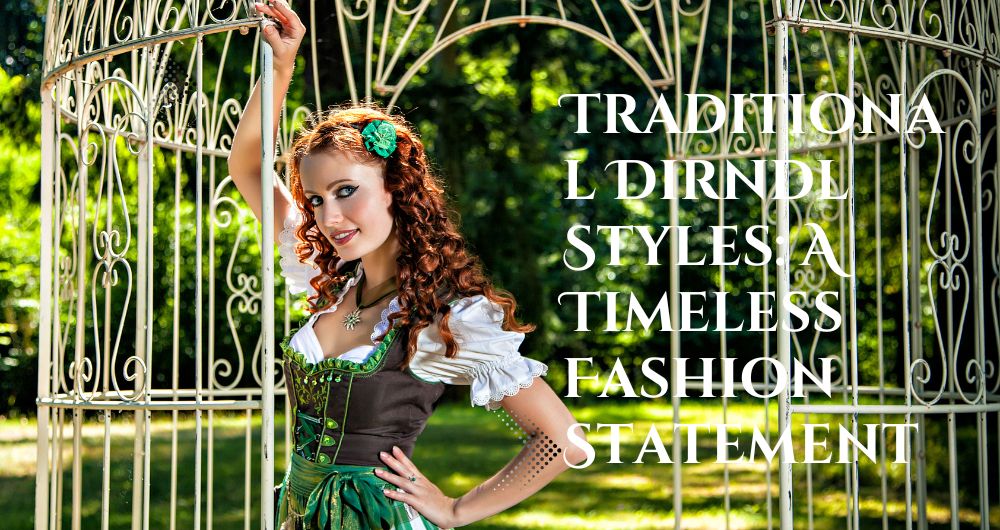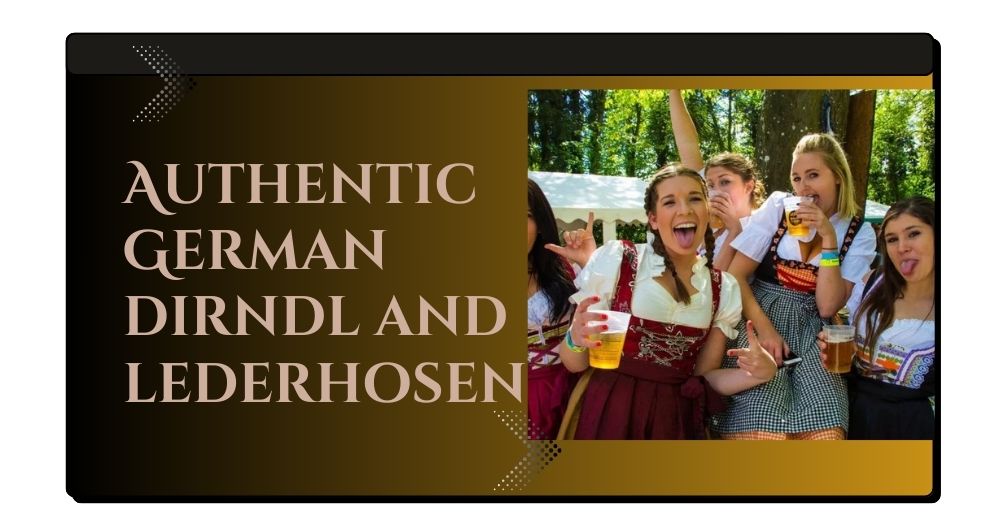Traditional Dirndl Styles: A Timeless Fashion Statement
When it comes to traditional attire, few garments are as iconic and enduring as the dirndl. Originating from the Alpine regions of Germany, Austria, Switzerland, and South Tyrol, the dirndl has transcended its humble beginnings as a peasant dress to become a symbol of cultural pride and timeless fashion. Whether you’re attending Oktoberfest, a traditional folk festival, or simply looking to incorporate a touch of heritage into your wardrobe, understanding the history, styles, and modern adaptations of the dirndl is essential. In this post, we’ll explore the rich history of traditional dirndl styles, their key features, and how to choose the perfect dirndl for any occasion.

The History of the Traditional Dirndl Styles: From Peasant Dress to Cultural Icon
The dirndl’s origins can be traced back to the 19th century when it was worn by women in rural Alpine regions as a practical and durable work dress. The name “dirndl” is derived from the Bavarian-Austrian word “Dirn,” which originally meant “young woman” or “girl.” Over time, the dirndl evolved from a simple working garment to a fashionable outfit, especially among the upper classes who romanticized rural life.
By the late 19th and early 20th centuries, the dirndl had become a popular choice for women across Europe, thanks to its versatility and charm. Today, it is most commonly associated with Oktoberfest, the world-famous beer festival held annually in Munich, Germany. However, the dirndl is also worn at weddings, folk festivals, and other cultural events, making it a versatile and enduring piece of traditional attire.
Key Features of Traditional Dirndl Styles
A traditional dirndl consists of several key components that give it its distinctive look:
- The Bodice (Leibl): The bodice is the fitted upper part of the dirndl, often featuring intricate embroidery, lace, or decorative buttons. It is designed to accentuate the waist and create a flattering silhouette.
- The Blouse (Dirndlbluse): Worn underneath the bodice, the blouse is typically made of lightweight fabric such as cotton or linen. It often features puff sleeves, a round neckline, and delicate embroidery or lace details.
- The Skirt (Rock): The skirt is full and gathered, falling to just below the knee or mid-calf. It is usually made from sturdy fabric like cotton, wool, or silk, and may feature pleats or patterns.
- The Apron (Schürze): The apron is worn over the skirt and is often the most decorative part of the dirndl. It can be tied in a bow at the front, back, or side, with the placement of the bow traditionally indicating the wearer’s marital status.
- Accessories: Traditional dirndl outfits are often accessorized with a pair of sturdy shoes, stockings, and a decorative apron. Jewelry, such as a brooch or necklace, can also add a touch of elegance.
Regional Variations in Traditional Dirndl Styles
One of the most fascinating aspects of the dirndl is the regional variations that exist across different parts of Germany, Austria, and Switzerland. Each region has its own unique take on the dirndl, with distinct colors, patterns, and embellishments that reflect local traditions and customs.
- Bavarian Dirndl: The Bavarian dirndl is perhaps the most well-known style, characterized by its bright colors, floral patterns, and intricate embroidery. It is the quintessential Oktoberfest dirndl and is often worn with a white blouse and a colorful apron.
- Tyrolean Dirndl: Originating from the Tyrol region of Austria, the Tyrolean dirndl is known for its earthy tones, such as green, brown, and beige. It often features edelweiss embroidery, a nod to the region’s alpine heritage.
- Swiss Dirndl: The Swiss dirndl is typically more understated than its Bavarian and Tyrolean counterparts, with simpler designs and muted colors. It often features cross-stitch embroidery and is worn with a white blouse and a black apron.
- Franconian Dirndl: The Franconian dirndl, from the Franconia region of Germany, is characterized by its bold colors and geometric patterns. It is often worn with a red or black apron and a white blouse.
Modern Adaptations of the Traditional Dirndl Styles
While traditional dirndl styles remain popular, modern adaptations have emerged to cater to contemporary tastes and lifestyles. Designers have reimagined the dirndl with shorter hemlines, slimmer silhouettes, and bold prints, making it a fashionable choice for women of all ages.
- Mini Dirndl: The mini dirndl is a modern twist on the traditional style, featuring a shorter skirt that falls above the knee. It is a popular choice for younger women and is often worn at festivals and parties.
- Luxury Dirndl: For those looking to make a statement, luxury dirndls are crafted from high-quality fabrics such as silk and velvet and feature elaborate embroidery and embellishments. These dirndls are often worn at weddings and other formal events.
- Casual Dirndl: The casual dirndl is designed for everyday wear, with simpler designs and more comfortable fabrics. It is a great option for those who want to incorporate traditional elements into their modern wardrobe.
How to Choose the Perfect Dirndl
Choosing the perfect Traditional Dirndl Styles depends on the occasion, your personal style, and your budget. Here are some tips to help you find the right dirndl:
- Consider the Occasion: For Oktoberfest or other festive events, opt for a traditional Bavarian dirndl with bright colors and floral patterns. For a wedding or formal event, a luxury dirndl with intricate embroidery and high-quality fabrics is a great choice.
- Choose the Right Fit: The bodice should fit snugly but comfortably, accentuating your waist without being too tight. The skirt should be full and flowy, allowing for ease of movement.
- Pay Attention to Details: Look for dirndls with high-quality embroidery, lace, and buttons. These details can make a big difference in the overall look and feel of the outfit.
- Accessorize Wisely: Complete your dirndl outfit with the right accessories, such as a decorative apron, a pair of comfortable shoes, and traditional jewelry.
Why the Traditional Dirndl Styles Remains a Timeless Fashion Statement
The Traditional Dirndl Styles enduring popularity can be attributed to its unique blend of tradition, craftsmanship, and versatility. It is a garment that celebrates cultural heritage while allowing for individual expression and creativity. Whether you’re wearing a traditional Bavarian dirndl at Oktoberfest or a modern mini dirndl at a summer festival, the dirndl is a timeless fashion statement that continues to captivate and inspire.
Conclusion Traditional Dirndl Styles

Traditional dirndl styles are more than just clothing; they are a celebration of culture, history, and craftsmanship. From their humble beginnings as peasant dresses to their status as iconic fashion statements, dirndls have stood the test of time. Whether you’re drawn to the vibrant colors of a Bavarian dirndl, the earthy tones of a Tyrolean dirndl, or the modern adaptations of a mini or luxury dirndl, there’s a style to suit every taste and occasion. So, the next time you’re looking to add a touch of tradition to your wardrobe, consider the timeless charm of the dirndl.
